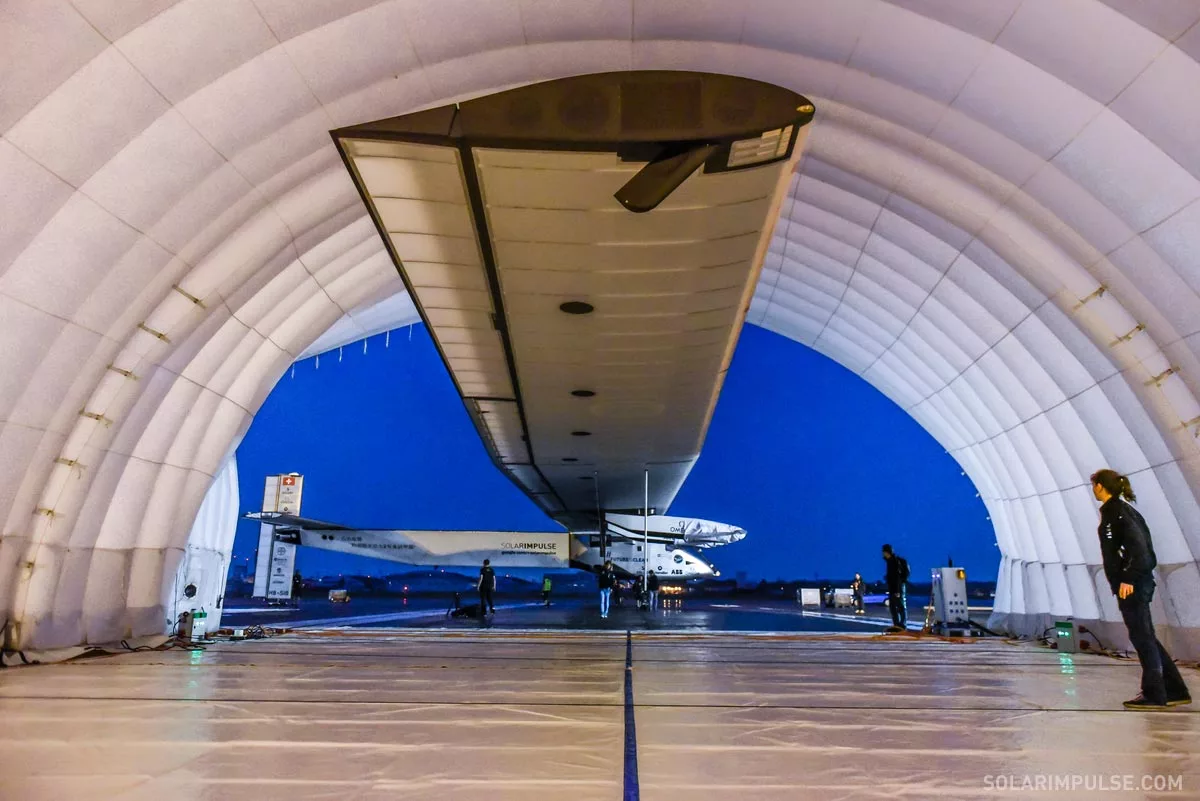Solar Impulse 2 has resumed the longest leg of its round-the-world flight. After being grounded for almost four weeks, the single-pilot craft rolled out discretely from Nagoya, Japan today in the hope of taking advantage of improved weather conditions over the Pacific Ocean as it heads for Hawaii.
Solar Impulse 2 has been stranded in Nagoya since June 1 when it was forced down due to deteriorating weather along its five-day flight path. After an aborted attempt to resume its circumnavigation on June 23, the Solar Impulse organization was worried that continuing poor conditions, the local rainy season, and shortening days might result in the mission being postponed for another year and the solar-powered craft stored in a Japanese hangar.
But now another attempt is underway.
With Swiss pilot André Borschberg once again at the controls, Solar Impulse 2 took off early Sunday morning in an effort to take advantage of improving conditions and has now passed the point of no return in its attempt to reach Hawaii, a journey which will take five days and – incredibly for a solar powered craft – five nights.

With its 72-m (236-ft) wingspan, the Solar Impulse 2 is wider than a Boeing 747-8I, but weighs only about 2,300 kg (5,070 lb). It’s made out of carbon fiber, employing a light single-ply technology used in competitive yachting, making it three times lighter than paper. Its four electric motors are powered by 17,248 solar cells 135 microns thick built into the wing and protected by a fluorine copolymer film, which feed banks of high-density lithium polymer batteries weighing 633 kg (1,395 lb). In flight, the plane is charged by the Sun during the day and powered by batteries at night for "virtually unlimited autonomy" and an average speed of 50 to 100 km/h (31 to 62 mph).
A live feed of the remarkable flight can be viewed on the Solar Impulse YouTube channel.
Source: Solar Impulse




